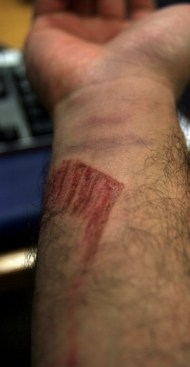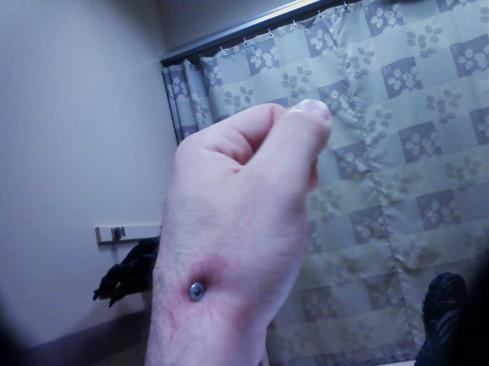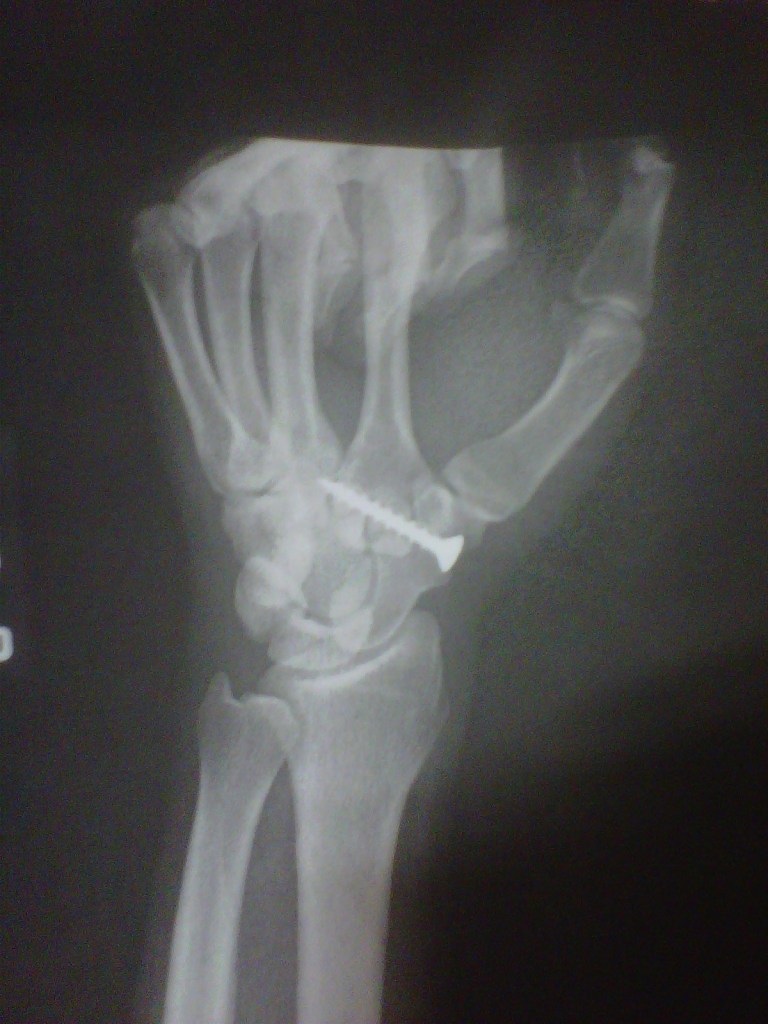My first experience of a serious tool-related injury occurred in about 2004 when I was framing a house. It was a warm summer day, and not too muggy—the best kind for work like that. Our lead framer had gone to another job, leaving me and a newer guy alone to frame the exterior walls. He was a hard-worker, earnest in his desire to get the job done. But he was also frenetic in everything he did, which made me nervous. So, after laying out the plates, I set him up on one corner while I worked on the complete opposite corner. I’d worked with him enough to feel like he could bang studs together without screwing it up or, so I thought, doing anything dangerous. But I liked the distance between us just the same.
Things seemed to be going well until I heard a repetitive banging of the framing nailer against one of the plates. I got nervous after the third “click,” and by the time I lifted my head to see what was happening, the gun had gone off and I heard a loud “AGGGGGHHHH!” followed by a slew of colorful expletives. He stopped screaming when he realized it didn’t hurt as much as he thought it did or should. I ran over to him to see a coated 3 ¼-inch framing spike through his ring finger in such a way that when he waved at me, it looked like an inverted cross. On our way to the ER, he waved at everyone who drove past us. I knew the lesson had been lost on him—and my fear was validated when I heard that he had severed four fingers on a table saw six months later (I had already left to take a gig as an editor at Fine Homebuilding). He miraculously maintained full use of his hand after surgery and, thankfully, at least from what I hear, hasn’t had any injuries since.
I have always considered myself a safety-first tool user, but witnessing these events gave me a heightened sense of what could go wrong, and how quickly it could happen. So it’s somewhat embarrassing to share my own tool-related injuries, which happened after these experiences. But I am relaying them here in hopes to start a discussion about tool safety in general, and to encourage folks to share their own stories.

Table-Saw Push-Stick Trick
Several years later, I was ripping some 1x12x12s in my yard on a portable table saw with the help of a friend’s father. He was somewhat of a maverick and in my own dumb naiveté, I let his own sensibilities override my own—something I’ll never do again. I set the saw up on a rickety garden table he placed for me, and I didn’t have an outfeed support—which is what my friend’s father was for. I didn’t feel totally comfortable with the table saw to begin with— the power switch was on the opposite side than what I was used to, and the fence felt flimsy. But, I was in a “get it done” mode, which is never a good place to be in when you flip a table saw on.
We began ripping, and, again against my better judgment, I grabbed a 2×2 scrap for a push stick. As I fed, my friend’s father supported the board on the other end—until that split second when he pulled before I was done pushing. It happened just as my push stick was close to the front of the blade. As he pulled, it kicked the push stick over. All I remember was a loud bang, the table saw whirring like a lion that had been shot, and feeling like my arm had been ripped off—it happened that quickly. The push stick ended up on the other side of the yard and my arm miraculously was still attached—and not at all broken. It took almost a year for my arm to heal. I considered myself lucky when thoughts of that stick hitting me in the face played out in my head.

Working Dumb Gets You Screwed
My final—and hopefully my last— personal tool-related injury happened seven years ago. It was part fluke, but all dumb-ass on my part. I was building a vanity out of heart pine and needed a small jig for my router. Again in a “get-it-done-dash,” I began assembling with screws and scraps that were laying around the shop. I thought to pre-drill, but I ignored the sensibility—why, I’m not now sure. Probably because that would have taken an extra 45 seconds that I didn’t have? Dumb. I thought to clamp the pieces together too—but my clamps were all being used. So after I tacked the pieces together, I began running screws in. I held the board down with my left hand—and drove screws from the other side. Dumb. It was late in the day, and I was tired—but I pressed on. Dumb. I pushed so hard one time that the board split and before I knew it, I had driven the screw into my wrist.
I got a lot of attention at the ER—people had to see who’d just come in with a screw through his wrist. They called a hand surgeon in who found it amusing and, I think, a fun challenge for him. With a seriousness that scared me, he asked if I’d brought the screw gun with me so he could back the screw out. Then he paused, laughed, and said, “I’m just kidding. I’m going to back it out with a pair of pliers.” I don’t know why I thought it had to be done any other way—but I was not looking forward to the process. He shot a nerve block into my hand, grabbed a set of needle-nosed, and said “Righty-tighty, lefty-loosey, right? Or is it the other way around?” I was glad he was having fun—and felt a little deserving of his mockery. He backed the screw out with no issue. It turned out that I had just missed a branch of an artery and didn’t do any harm to the bone or nerves. My embarrassment turned to relief quickly—and before long, I was home. It’s hard for me to pick up a screw now without thinking about that time—which is a good thing. It reminds me that even the simplest and seemingly innocuous tools can be dangerous if I’m in the wrong mindset and not paying diligent attention. And I also maintain my friend and former editor Kevin Ireton’s philosophy that if I get to the end of a work day and am tired, but say to myself “I’m just going to do this one more thing,” I stop, put my tools away, and repeat the mantra, “It’ll all still be here in the morning when I’m fresh and well-rested.”
If you have a story about a tool-related injury you’d like to share, please send me an email at cermides@hanleywood.com
